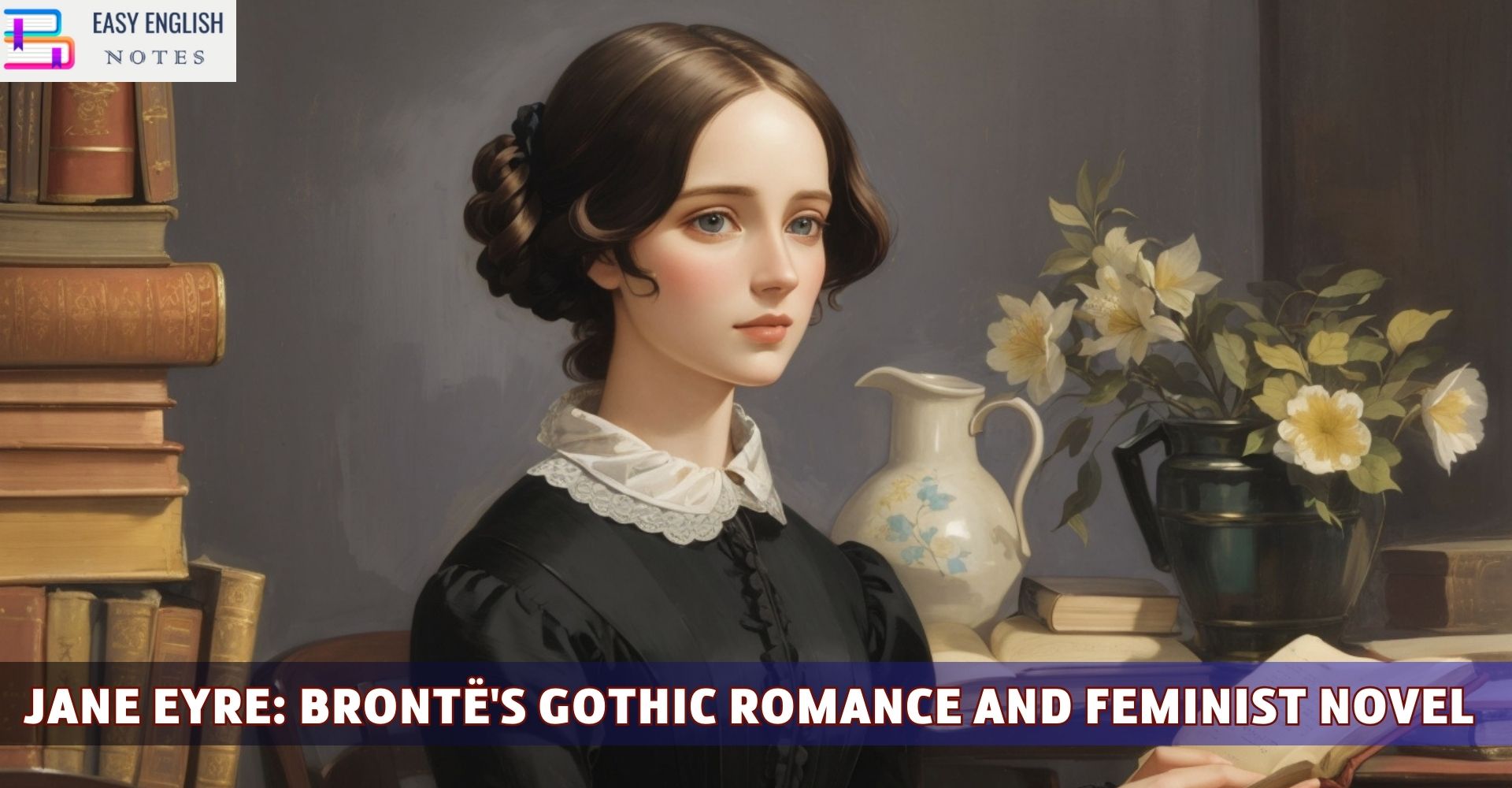Introduction:
“Jane Eyre,” written by Charlotte Brontë and published in 1847, is a novel that masterfully combines elements of gothic romance with deep feminist undertones. The novel, narrated in the first person, follows the life of its eponymous heroine, offering a profound exploration of themes such as morality, religion, social class, and gender relations in Victorian England.
Plot Overview:
The novel traces Jane Eyre’s life from her difficult childhood as an orphan living with her cruel aunt and cousins, through her education at Lowood School, where she faces hardship but also gains a sense of independence and moral fortitude. As an adult, Jane becomes a governess at Thornfield Hall, where she meets the brooding and enigmatic Mr. Rochester, with whom she falls in love.
Gothic Elements:
“Jane Eyre” is notable for its use of gothic elements, including the mysterious and atmospheric Thornfield Hall, the presence of a ‘madwoman in the attic’, and supernatural occurrences. These elements add a sense of suspense and foreboding to the story, underscoring the novel’s exploration of themes like isolation and the unknown.
Feminist Themes:
Jane Eyre is often celebrated as a feminist novel for its portrayal of Jane as an independent and strong-willed woman. Despite her difficult circumstances, Jane consistently asserts her sense of self-worth and demands respect and equality in her relationships, particularly in her relationship with Mr. Rochester.
Character Development:
Jane’s character development is central to the novel. She evolves from a passionate and sometimes rebellious child to a composed and morally grounded adult, while still maintaining her integrity and strong sense of self. Her moral and spiritual growth is a key focus of the narrative.
Social Critique:
The novel offers a critique of the rigid social hierarchy of Victorian England, especially in its portrayal of gender and class. Jane’s status as a governess places her in a unique position between the upper and lower classes, allowing Brontë to explore the complexities and constraints of social position.
Religious and Moral Themes:
Religion plays a significant role in “Jane Eyre,” with Brontë examining various approaches to faith and morality through her characters. Jane’s own moral compass, guided by a strong sense of Christian duty and personal integrity, is contrasted with the hypocrisies and harshness of some of the more dogmatically religious characters.
Romantic Elements:
The romance between Jane and Mr. Rochester is a central element of the novel. Their relationship is complex and fraught with obstacles, including the revelation of Mr. Rochester’s secret marriage to Bertha Mason, the ‘madwoman in the attic.’ This twist adds dramatic tension and underscores the novel’s exploration of themes like honesty, trust, and moral rectitude.
Also Read :
- Compare Hamlet with Macbeth, Othello and other Tragedies
- “The Pardoner’s Tale” is the finest tale of Chaucer
- Prologue to Canterbury Tales – (Short Ques & Ans)
- Confessional Poetry – Definition & meaning
- Line By Line Explanation Of The Poem The Eve of St. Agnes
The Symbolism in “Jane Eyre”:
Charlotte Brontë employs various symbols to enrich the narrative of “Jane Eyre.” The foreboding Thornfield Hall represents the confinement and hidden secrets of Victorian society, while the ‘Red Room’ in Jane’s childhood symbolizes trauma and imprisonment. Fire and ice imagery throughout the novel are used to represent Jane’s passionate inner nature versus the external constraints placed upon her.
Mental Health and Bertha Mason:
The character of Bertha Mason, Mr. Rochester’s wife who is kept hidden due to her mental illness, serves as a critical commentary on the treatment of mental health in the Victorian era. Bertha’s character also symbolizes the repressed aspects of Victorian society, particularly relating to female sexuality and autonomy.
Jane’s Quest for Freedom and Identity:
Jane’s journey is fundamentally one of self-discovery and the quest for freedom. Her refusal to become Mr. Rochester’s mistress, despite her deep love for him, highlights her commitment to her moral principles and her desire for an equal and honest relationship.
The Role of Nature:
Nature in “Jane Eyre” often reflects Jane’s inner state. Brontë uses the natural setting, from the moors to the gardens of Thornfield, as a mirror of Jane’s emotions and as a source of solace and strength for her character.
Love and Morality:
The novel doesn’t just present a simple love story; it intricately weaves themes of love with questions of morality. Jane and Rochester’s relationship is deeply affected by their respective moral choices and the ethical dilemmas they face. Their eventual reunion only occurs after a moral equilibrium is restored.
Social Criticism:
“Jane Eyre” provides a critical look at various social issues, including class inequality, gender discrimination, and religious hypocrisy. Jane, as a governess, inhabits a middle ground between the upper and servant classes, allowing Brontë to explore the social dynamics and prejudices of the time.
Impact and Legacy:
“Jane Eyre” had a significant impact upon its release and continues to be highly regarded for its contribution to literature. It challenged the norms of Victorian literature, particularly in its portrayal of a female protagonist whose strength and independence defied contemporary stereotypes. The novel has inspired numerous adaptations and remains a subject of study for its thematic depth and narrative technique.
Conclusion:
“Jane Eyre” is a complex and enduring novel that combines elements of gothic romance with a deep examination of social issues and personal integrity. Charlotte Brontë created a work that not only entertains but also challenges and inspires. Its exploration of themes such as independence, morality, love, and social critique has ensured its status as a classic in English literature and a pioneering work in feminist literature. Jane’s character, with her resilience, moral conviction, and pursuit of self-respect and equality, continues to resonate with readers across generations.
PLEASE HELP ME TO REACH 1000 SUBSCRIBER ON MY COOKING YT CHANNEL (CLICK HERE)











